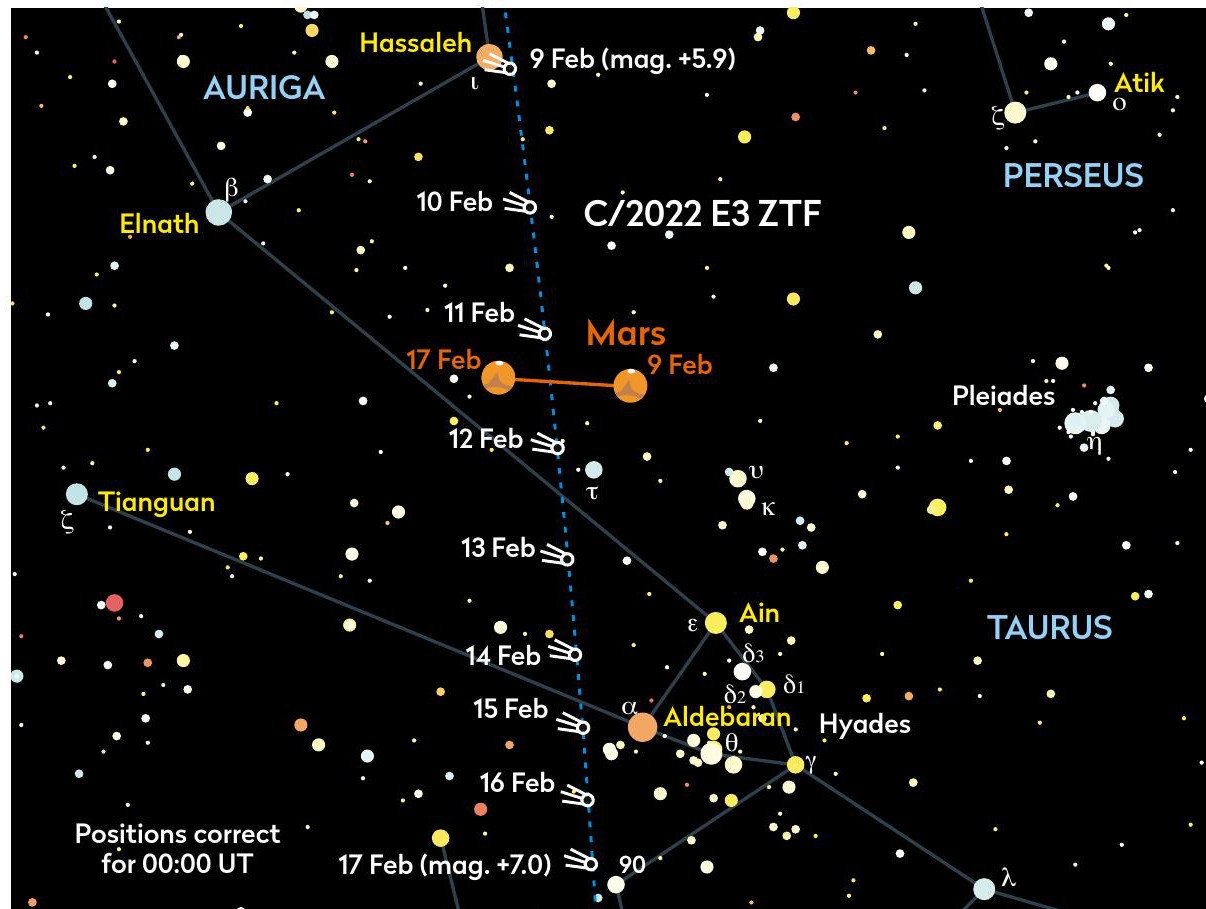Fingers crossed for comet C/2022 E3 ZTF reaching naked-eye visibility this month

Comet C/2022 E3 ZTF is well-positioned at the start of February, high in the sky and theoretically above the threshold for nakedeye visibility. There are a couple of reasons why this is unlikely to be the case though. First, the comet is expected to reach a peak magnitude of +4.8 around the end of January and start of February. Comet magnitudes can be misleading because they refer to how bright the object would look if its light were condensed into a single point like a star.
If the comet has a tangible size, that light is spread out, making its surface dimmer than its rating would suggest. Secondly, there will be a bright Moon and this will sadly diminish the appearance of C/2022 E3 ZTF. You can find where the comet will be throughout February in the Big Three, and as it passes some easy-to-find sky markers, there is a good chance to catch it using binoculars or a small telescope.
C/2022 E3 ZTF was discovered by the Zwicky Transient Facility (ZTF) on 2 March 2022. The ZTF is a widefield survey setup using an infrared- and visible-light-sensitive camera attached to the 1.22m Samuel Oschin Telescope at the Palomar Observatory in California. The object was originally thought to be an asteroid shining at mag. +17.3 when discovered, at a distance 4.3 times further from the Sun than Earth. It’s a long-period comet with an orbit that takes around 50,000 years to complete. At the farthest point in its orbit it lies 2,800 AU from the Sun; at its closest it is 1.11 AU, which last occurred on 12 January. The orbital positions of Earth and the comet mean that C/2022 E3 ZTF will be closest to our planet on 2 February, separated from us by a mere 43 million kilometres (0.29 AU).